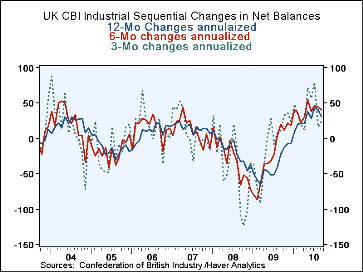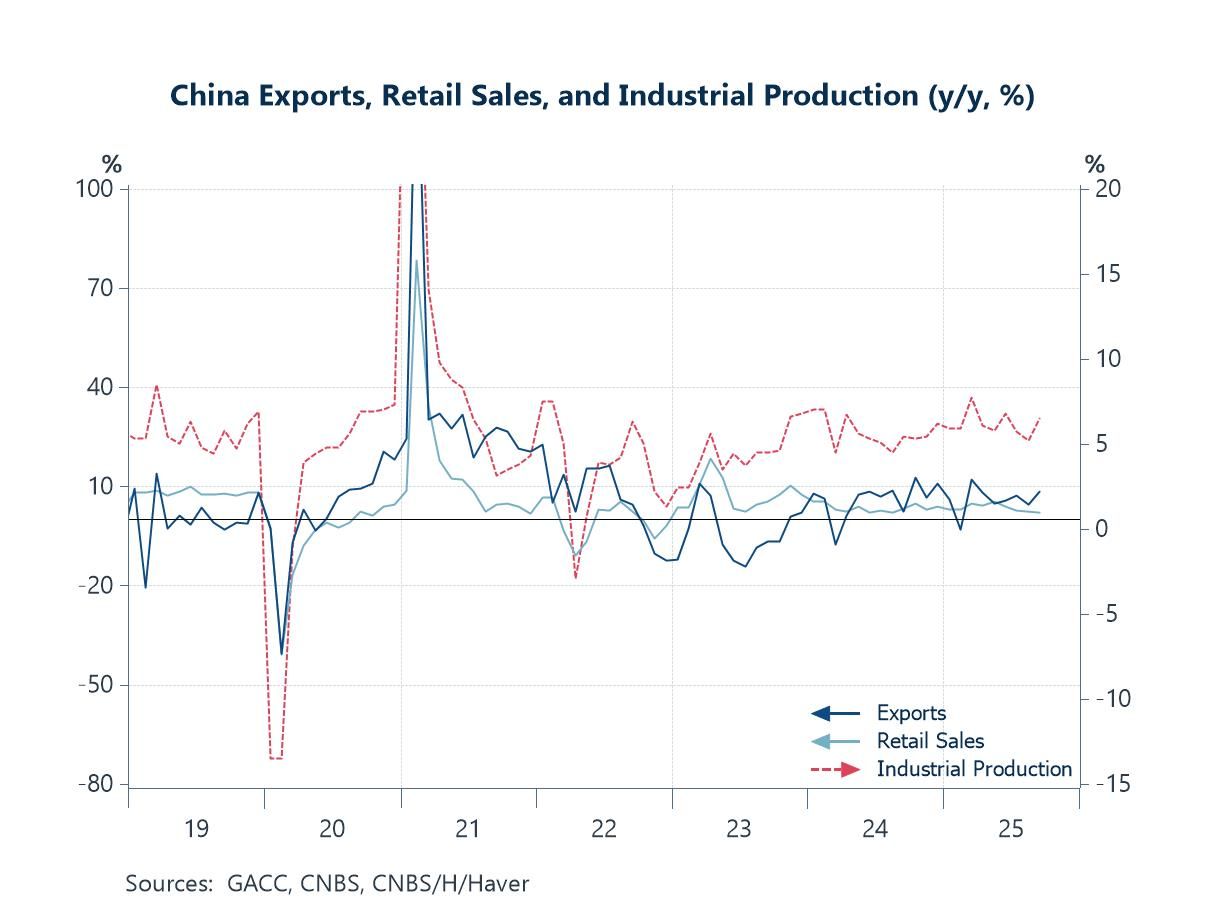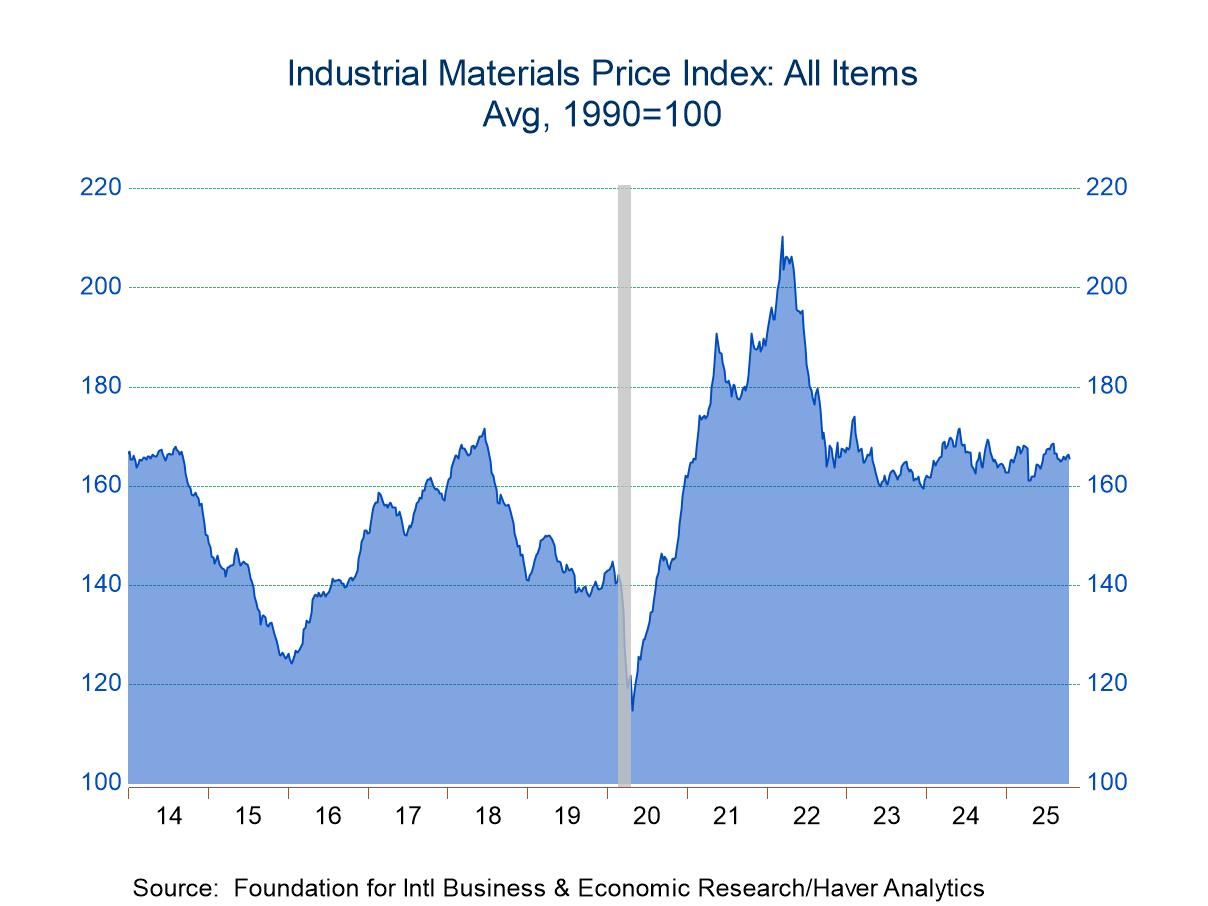 Global| Sep 16 2010
Global| Sep 16 2010UK CBI Survey Continue Backing Off
Summary
The UK CBI survey showed backing off continues in the trend for new orders. Exports from EMU also have been weakening. Germany reported weaker IP and weaker new industrial orders. Germany’s Zew index has seen expectations back off [...]
 The UK CBI survey showed backing off continues in the trend for new orders. Exports from EMU also have been weakening.
Germany reported weaker IP and weaker new industrial orders. Germany’s Zew index has seen expectations back off sharply,
but current conditions have continued to improve in Germany. This report from UK industry is just another sign of
spreading weakness in growth.
The UK CBI survey showed backing off continues in the trend for new orders. Exports from EMU also have been weakening.
Germany reported weaker IP and weaker new industrial orders. Germany’s Zew index has seen expectations back off sharply,
but current conditions have continued to improve in Germany. This report from UK industry is just another sign of
spreading weakness in growth.
The UK report shows the import survey off to a -17 net diffusion reading below August's -14 reading. This leaves the indicator in the 59th percentile of its range, a strongly negative reading that is still in the upper half of its range. Export orders also slipped and posted a -5 reading in September. They stand at a stronger position in the upper third of their range.
Optimism, however is still very solid in the UK, unlike in Germany. Output volume expected in the next 3-months rose to a net diffusion value of +12 up from +10. The average prices expected also rose to +11 from +5.
After a recession most economies have a growth spurt referred to as a recovery rate. The recovery rate is stronger than the average or sustainable growth rate for an economy. The growth spurt, usually lasts for a year or more in the recovery depending on a number of factors. So as we get one year into this recovery it is not surprising to see some topping off of growth rates. The continued optimism in the UK is the normal case. As growth is expected to slow but continue. The pessimism and holding back of consumer spending which is a rather widespread global phenomenon is not common and it is a reflection of the depth and nature of the recession and of the confidence economic agents have in policymaking authorities.
| UK Industrial volume data CBI Survey | ||||||||||
|---|---|---|---|---|---|---|---|---|---|---|
| Reported: | Sep 10 |
Aug 10 |
Jul 10 |
Jun 10 |
May 10 |
12MO Avg |
Pcntle | Max | Min | Range |
| Total Orders | -17 | -14 | -16 | -23 | -18 | -36 | 59% | 13 | -61 | 74 |
| Export Orders | -5 | -1 | -12 | -2 | 3 | -25 | 67% | 20 | -55 | 75 |
| Stocks:FinGds | 4 | 1 | 3 | 11 | 10 | 11 | 18% | 31 | -2 | 33 |
| Looking Ahead | ||||||||||
| Output Volume:Nxt 3M | 12 | 10 | 6 | 15 | 17 | 6 | 71% | 36 | -48 | 84 |
| Avg Prices 4Nxt 3m | 11 | 5 | 9 | 14 | 16 | 5 | 61% | 37 | -30 | 67 |
| From early 1989 | ||||||||||
Robert Brusca
AuthorMore in Author Profile »Robert A. Brusca is Chief Economist of Fact and Opinion Economics, a consulting firm he founded in Manhattan. He has been an economist on Wall Street for over 25 years. He has visited central banking and large institutional clients in over 30 countries in his career as an economist. Mr. Brusca was a Divisional Research Chief at the Federal Reserve Bank of NY (Chief of the International Financial markets Division), a Fed Watcher at Irving Trust and Chief Economist at Nikko Securities International. He is widely quoted and appears in various media. Mr. Brusca holds an MA and Ph.D. in economics from Michigan State University and a BA in Economics from the University of Michigan. His research pursues his strong interests in non aligned policy economics as well as international economics. FAO Economics’ research targets investors to assist them in making better investment decisions in stocks, bonds and in a variety of international assets. The company does not manage money and has no conflicts in giving economic advice.






